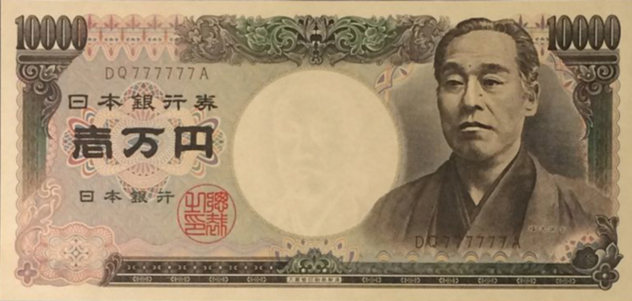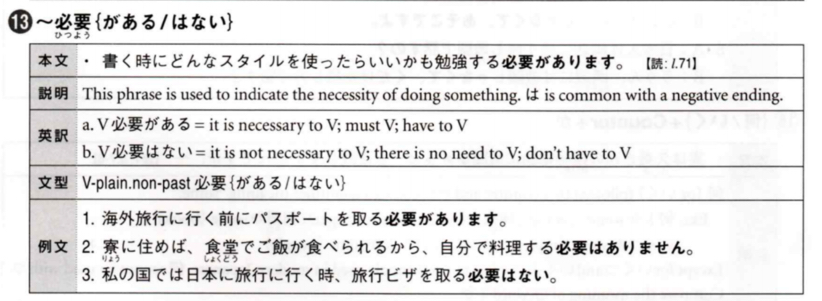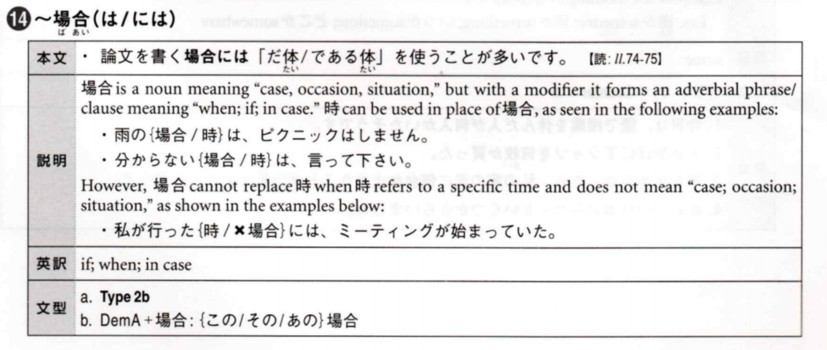Today’s Random Topic:
福沢諭吉「学問のススメ」
Encouragement for Education by Yukichi Fukuzawa
今日のキーワード
印刷(いんさつ)する – to print out
高度経済成長(こうどけいざいせいちょう) – rapidly growing country
貢献(こうけん) – to contribute
資源(しげん) – natural resources
経済(けいざい)- economy
見習う(みならう)- to learn from
独立宣言(どくりつせんげん)declaration of Independence
憲法(けんぽう)- constitution
開国要求(かいこくようきゅう)- request country to open to foreign countries
習得(しゅうとく)- to master
架け橋(かけはし)- bridge between
来航(らいこう)- came by boat
近代化(きんだいか)- modernize
平等(びょうどう)- equal
創設(そうせつ)- establish
複式簿記(ふくしきぼき)- double -entry bookkeeping
仕組み(しくみ)- structure
格言(かくげん)- saying
勇者(ゆうしゃ)- winner
進歩(しんぽ)- to move forward
退歩(たいほ)- be behind
毛嫌い(けぎらい)- hate without reason
Please do not read English translation below if you would like to do “Listening Challenge”!
日本に来て、福沢諭吉を知らない人はいないと思います。
If you have been to Japan, you know who Yukichi Fukuzawa is.
そうです、一万円札に印刷されている人です。
That’s right. He is the one who appears on the 10,000 yen bill.
福沢諭吉は、簡単にいうと、日本の高度経済成長に貢献した人、と言えます。
I would say, he is the person who contributed to Japan’s rapidly growing economy.
あ、だから一万円札なんでしょうか?
Oh, that’s why he’s on the 10,000 yen bill?
こんな小さい資源もない島国が、世界経済大国3位というのは、おかしくないですか?
Don’t you think it’s not reasonable that this small island country without natural resource is ranked as the 3rd biggest economy country?
福沢諭吉は、簡単にいうと、アメリカを見習うように日本人に働きかけました。
To put it simply, he encouraged Japanese people to learn from what America did.
福沢諭吉の有名な言葉には、1876年に出版された「学問のススメ」に書かれたこの言葉があります。
His famous sayings are in Encouragement for Education which was published in 1876.
「天は人の上に人を作らず。人の下に人を作らず。」
“Heaven does not put any people on people. They don’t put any people under people.”
ん?これなんか聞いたことあるな?と思いました。
I thought, “Huh? I’ve heard this before.”
1776年のトーマス・ジェファーソンが書いたアメリカの独立宣言の「すべての人は平等である」に似ています。
It’s similar to the American Declaration of Independence in 1776, “We hold these truths to be self-evident, that all men are created equal.”
そして、それは日本の憲法第13条にも影響を与えています。
And then its effect can be seen in Article 13 of the Japanese Constitution.
1853年に、ペリーの黒船が日本の開国要求に来た時にも、福沢諭吉は習得した英語でペリーと徳川幕府の架け橋となり活躍しました。
When Perry, on board on the Black ferry, requested Japan to open to foreign countries in 1853, Fukuzawa acted as a bridge between Perry and the Tokugawa Shogunate using English.
5歳の時から漢学を学んでいましたが、ペリー来航の後にはアメリカに行き、アメリカのいろんな書物を和訳し、日本の近代化を勧めました。
Fukuzawa had learned Chinese since he was five years old, though, after Perry came to Japan, he visited America and translated many English books into Japanese, and tried to modernize Japan.
平等な教育を目指し、現在の慶應義塾大学も創設しました。
He established Keio University to pursue equal education.
複式簿記の仕方や中央銀行の役割なども福沢諭吉がアメリカから学んで日本に紹介したようです。
He also introduced double-entry bookkeeping and the role of the central bank to the Japanese people.
私も元銀行員なので、決算書を毎日読んでいましたが、英語の単語を無理矢理日本語に訳しただけだな、と思っていました。(例えば、売掛金がAccount Receivable, 買掛金がAccount Payable)
I had been a banker, so I used to read financial statements every day, though, I was thinking that Japanese bookkeeping terms are the direct translation of English bookkeeping terms.
そのほか、アメリカの保険の仕組みも紹介したようです。
Other than that, he also introduced the insurance system of America.
「学問のススメ」に書いてある有名な格言も以下のようにたくさんあります。この本は現代でもビジネス本として使えそうです。
There are many famous saying in Encouragement for Education. It seems like we can use it as a business book still.
(1) 原文「賢人と愚人との別は、学ぶと学ばざるとによって出来るものなり。」
現代訳「賢い人と愚かな人との違いは、学ぶか学ばないかによってできるものなのだ。」
The difference between “Smart people and stupid people are made from whether the person learns or not.”
(2)原文「見込みあればこれを試みざるべからず。未だ試みずして先ずその成否を疑う者はこれを勇者というべからず。」
現代訳「見込みがあるならば、それを試さないでいるべきではない。試してみることもしないでできるかできないかを考える人は、勇者ではない。」
If you find any chance, you should try it. Without doing anything and think if they can do it or not, you will not be a winner.
とにかくやってみなければはじまらない!ということですね。
It means you will never know the result without doing it.
これはビジネス本にはよく書いてありますね。
Business books often talk about it.
(3)原文進まざる者は必ず退き、退かざる者は必ず進む。」
現代訳「進歩しない者は必ず退歩する。退歩しない者は、必ず進歩する。」
“If you don’t try to move forward, you will be behind for sure. If you don’t go back, you will move forward for sure. ”
つまり、「我々は止まってることはなく、前進しているか後退しているかのどちらかしかない」ということです。
In other words, it means, “We never stop. We either go forward or be behind.”
これもビジネス本などによく書いてあります。
Business books also mention this a lot.
(4)「読書は学問の術なり、学問は事をなすの術なり。」
本を読んでインプットするだけでは学問とは言えず、何か行動を起こすことに役立ててこそ学問だと言っています。
It says, the input by reading books is not education. If you make an action, then, it will be education.
確かに。現代でも資格ばかりとる人を、「資格マニア」と言いますが、そういう人は資格ばかりとって、結局学んだことが仕事やお金にならないということが多いです。
I agree. In modern Japan, there are many “Qualification Maniacs” who try to get as many certifications as possible, and they are never able to use the qualifications in order to get a job or earn money after all.
(5) 「人にして人を毛嫌ひするなかれ。」
“Do not hate people because you are a people as well.”
最後の一文がこの言葉です。
This is the last sentence.
冒頭(ぼうとう)に載っている「天は人の上に人を造らず人の下に人を造らずと言えり」は非常に有名ですが、人間のくせに人間を毛嫌いするのはよくないというこの言葉もすばらしい言葉ですね。
The passage in the beginning, “Heaven does not put any people on people. They don’t put any people under people” is very famous, though this sentence is also wonderful.
これらすべて日本語勉強にも当てはまりますよね。
Those sayings apply to Japanese learning as well.
学問のススメ、ぜひ読んでみてください。
Please try to read Encouragement for Education!
上級へのとびら CH2−6(本文5)
4. 文の倒置
The inversion of sentences
日本語の会話では、文の倒置もよく見られます。
Inverted sentences are also common in Japanese conversations.
「ごめん、連絡しなくて」
“Sorry. Not to have contacted you…”
「今晩のパーティーに行けないんです。宿題があるので。」
“I can ’t go to tonight’s party. I have homework.”
「かさ持ってないんだ。雨、降ってきたけど。」
“I don’t have an umbrella. It’s started to rain, though.”
上の文では一番言いたいことを始めに言って、その後で理由や状況を説明しています。
The speakers in the sentences above are saying what they want to say most at the beginning of the sentence, and then afterwards they explain the reason or situation.
このような話し方も日本語の特徴の一つです。。
This way of speaking is one of the characteristics of the Japanese language.
この形は、2. 男性と女性の話し方の違い にも見られます。2. の会話文に戻って、どんな例があるか見てみましょう
Examples of this can also be seen in 2. The differences between male and female speech. Go back to the dialogue in 2. To see what examples are there.
5. 書き言葉スタイル
Style of written language
話し言葉にいろいろなスタイルがあるように、書き言葉にもいろいろなスタイルがあります。
Just as there are many styles in spoken Japanese, there are also many styles in written Japanese.
日本語が上手になるためには、書くときにどんなスタイルを使ったらいいか勉強する必要があります。
In order to become skilled at Japanese, it is necessary to study which styles should be used when writing.

(1) You have to get a passport before you travel overseas.
(2) If you live in the dorms, you can eat at the cafeteria, so you don’t need to cook on your own.
(3) In my country, people don’t need a visa to travel to Japan.
例えば、携帯電話を使って友達に短いメッセージを送る時には、その友達と話す時のようなくだけた表現を使うかもしれません。
For example, when sending a short message to your friends by cellphone, you might use informal expressions as if you were speaking (directly) to them.
手紙を書く時には普通「です・ます体」、作文を書く時は「です・ます体」を使うことも「だ体」を使うこともあるでしょう。
When writing a letter, desu-masu style is usually used, and when writing a composition, there are times when da style is used.
また、論文を書く場合には「だ体・である体」を使うことが多いです。
Furthermore, when writing a paper or thesis, da style/de aru style is often used.

(1) In case we don’t find the dog tomorrow, let’s go look for it at the pet rescue center.
(2) If you ever come to Tokyo, let me know. I’ll come and see you.
(3) If it’s too difficult to do alone, it’s all right to work on your homework with your classmates.
(4) In the event of rain there will be no tennis match. In that case, you’ll be able to use your tickets for the next match.
(5)In the event of a fire or an earthquake, please refrain from using the elevator.